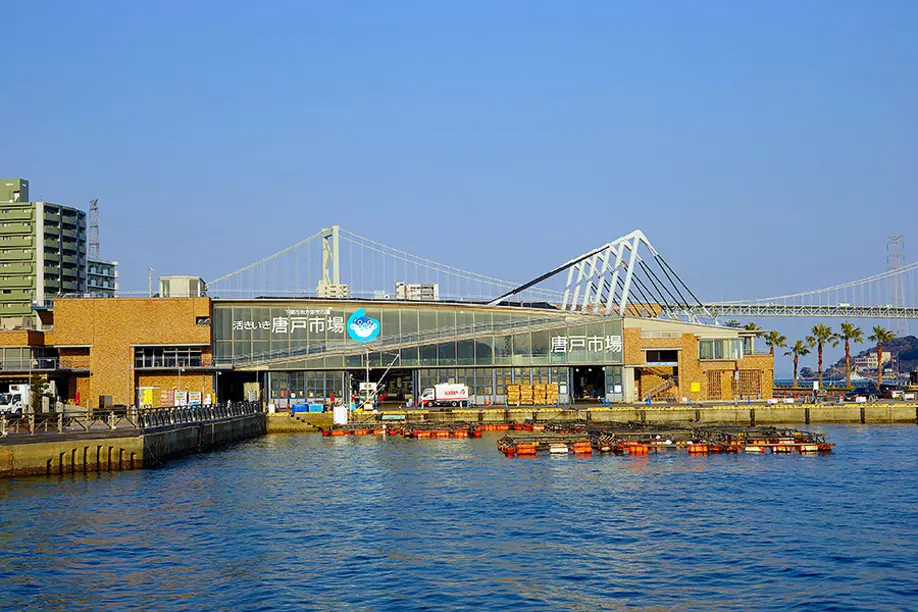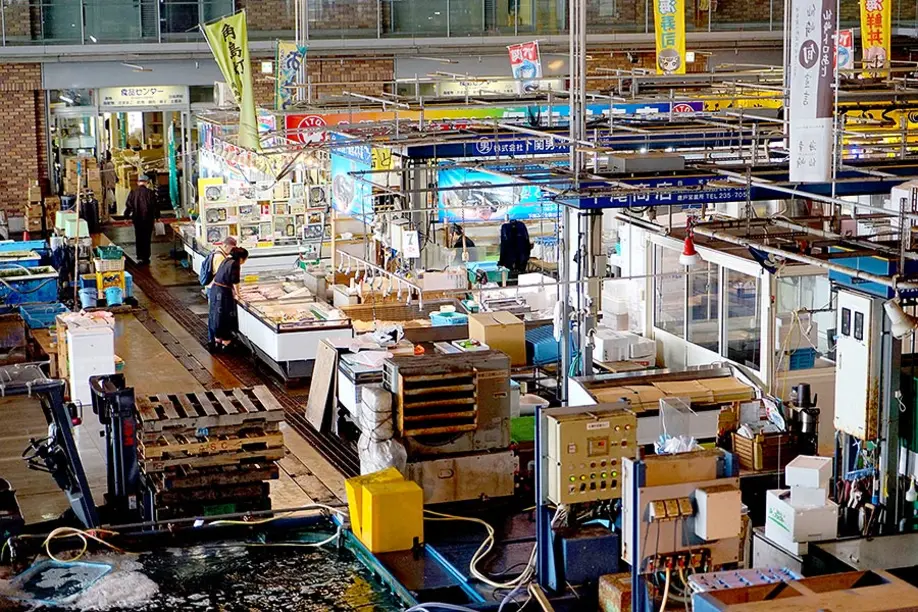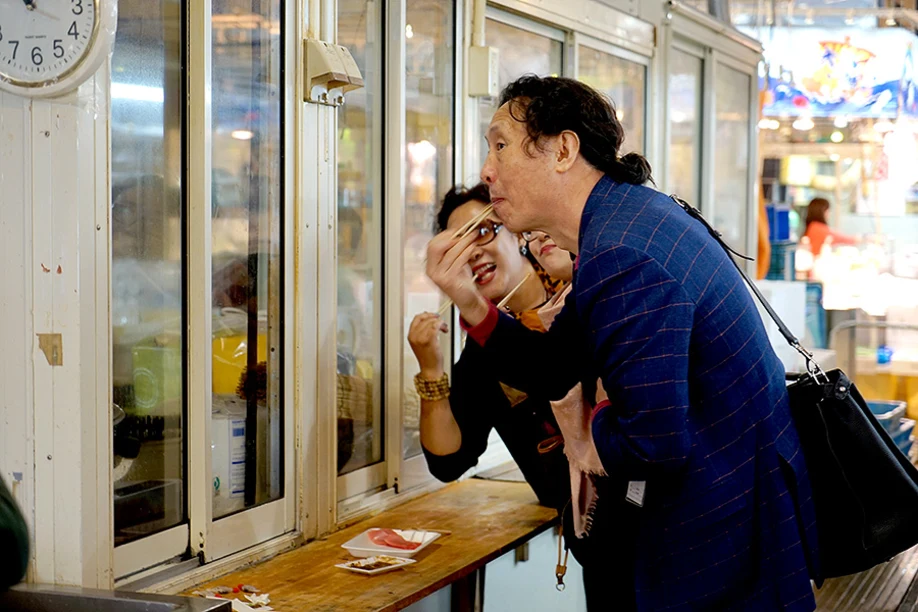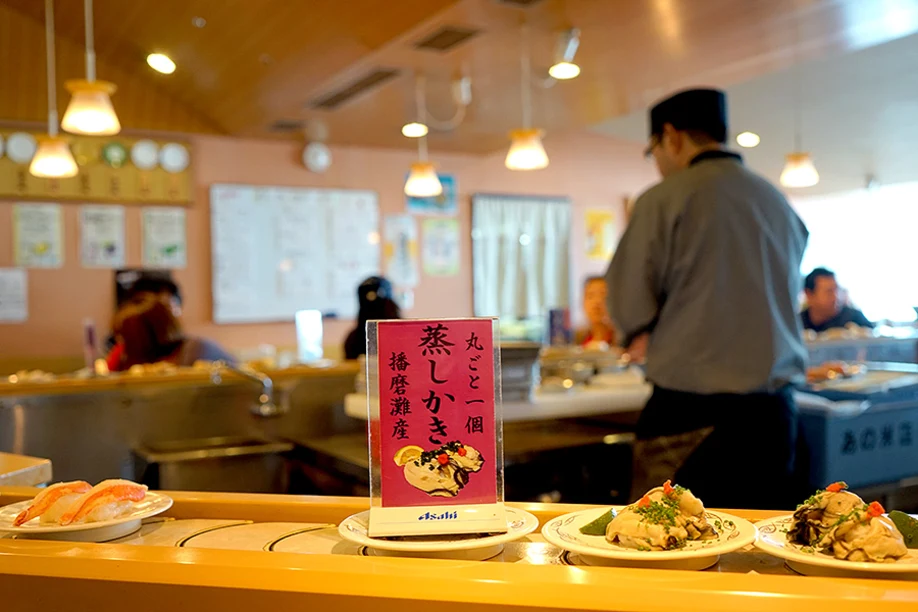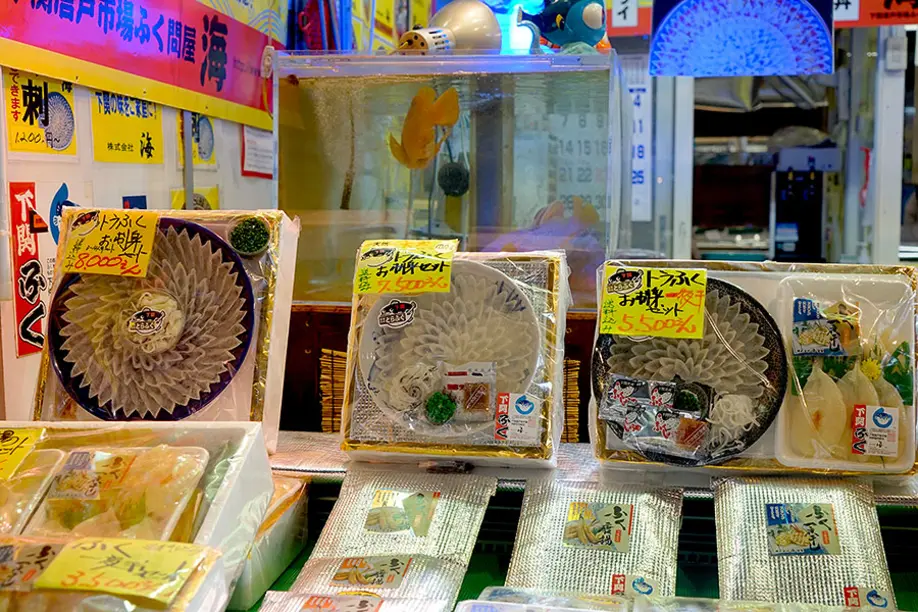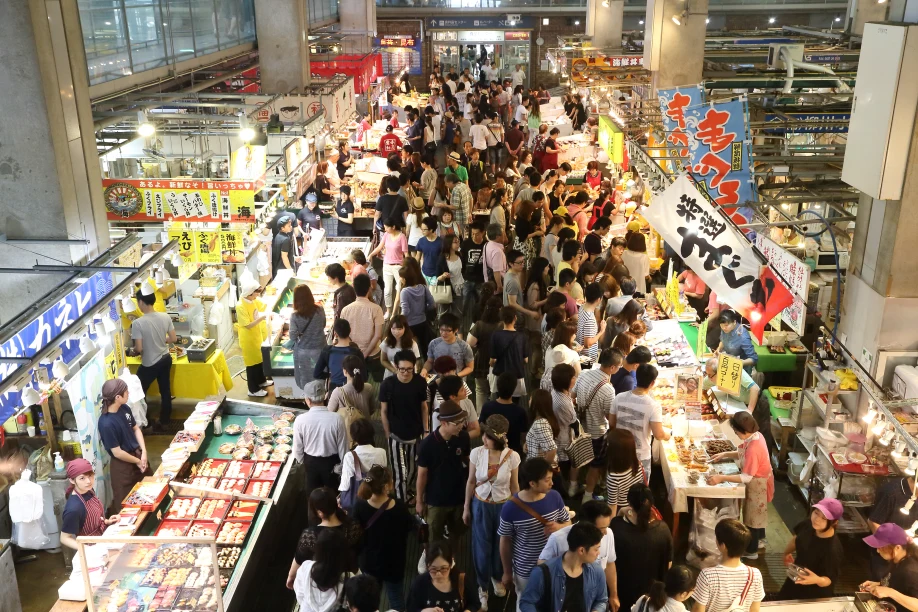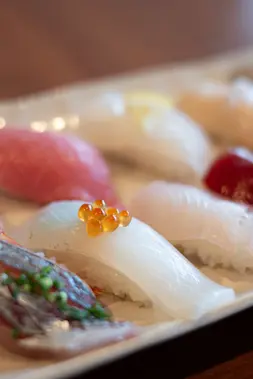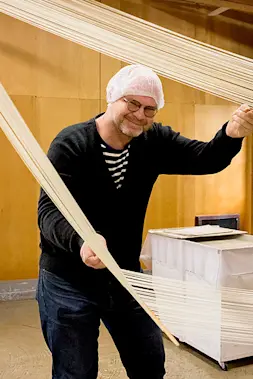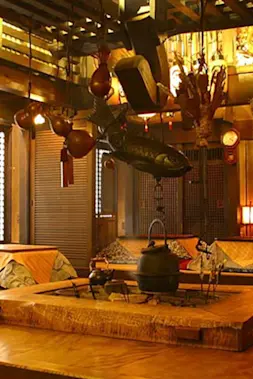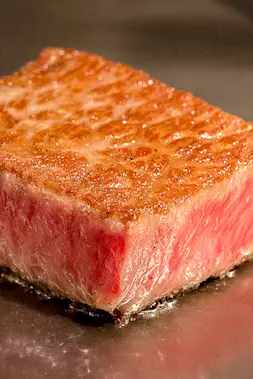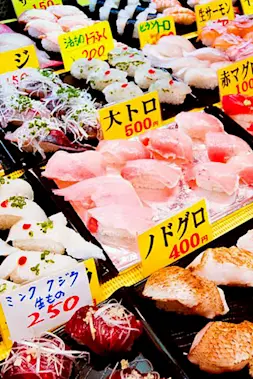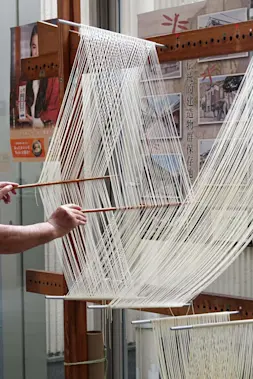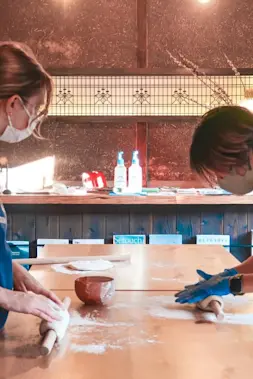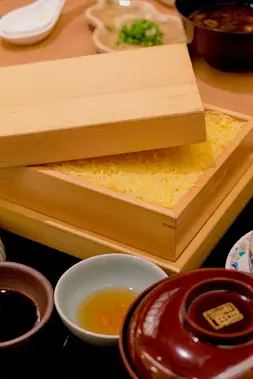Food & Drink
Karato Market - Shimonoseki's Finest Fish on the Waterfront
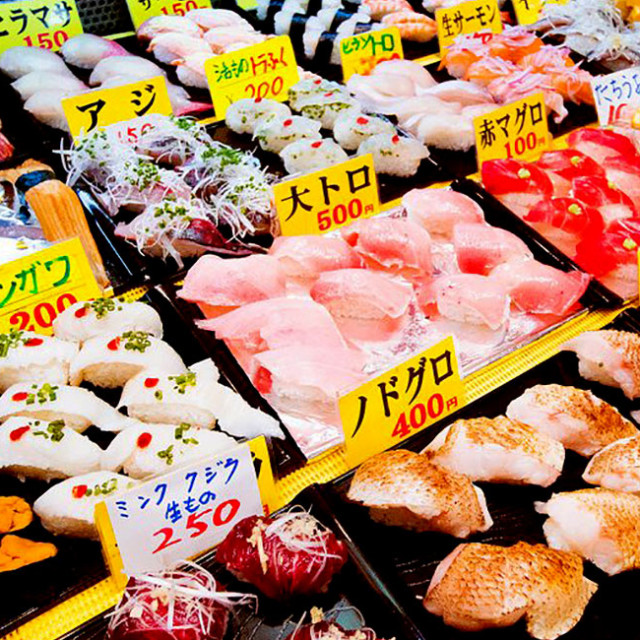
-
- DESTINATION NAME
- Yamaguchi
-
- RELATED TAGS
-
- LAST UPDATED
- 16 October, 2019
Karato Market is Shimonoseki’s user-friendly version of Tokyo’s huge Tsukiji wholesale fish market. However, in my opinion Shimonoseki wins hands down, by merit of both its location, and its openness to all buyers.
The fish market sits on the Yamaguchi side of the Kanmon Straits, which divides the mainland of Honshu from the southern island of Kyushu. This strait serves as the sole Eastern entrance to the Seto Inland Sea, and the enormous volumes of water flowing between it and the Sea of Japan make the straits a challenging body of water to cross.
Fast and challenging though they may be, these waters are also rich in marine life, and as I make my way toward the large entrance of the market, I'm excited by the prospect of finding all manner of creatures taken from the surrounding seas.
Crossing the walkway connecting the carpark with the market is an experience in itself.. Karato Market acts as the regional center for fresh seafood, so I shouldn't be surprised to find it a hive of activity.
But it's not all full-steam ahead, either. Looking down, I realize I'm above a promenade packed with people, relaxing as they stroll by the waterside. In the distance stands Kanmon Bridge crossing over to Kita-Kyushu, palm trees framing the foreground - a scene of tranquility.
Passing between the second floor restaurants, I find myself overlooking the market floor, standing directly above huge tanks full of live fish. Stalls stacked with ocean bounty sit just beyond.
The selling floor is quiet since I've arrived a little late to see the live auction take place. But the surrounding stalls are still busy selling the day's catch to locals, and tuna sashimi to be devoured immediately, for tourists – well, everyone really. People here are happy and friendly, patiently helping anyone with questions.
After walking around, I'm overcome by hunger, and ask a gregarious lady selling fish id she has any recommendations. While there's plenty to be found in the surrounding stalls, she suggests I go upstairs for sushi and sashimi, assuring me it would be excellent because all the fish had come from the market that morning.
Given the crowds milling around the front of the sushi shop, I'm expecting a long wait, but am pleasantly surprised to find an open seat at the sushi train. I'm a big fan of sushi trains, as I just love the assortment of shapes and colors constantly passing before my eyes.
(Little bit of a pro tip, as visually captivating as the plates are, to get the absolute freshest sushi at a sushi train, order directly from the sushi chef.)
The friendly chef behind the conveyor belt flashes a smile as I reel off my order. Since I was in Shimonseki, he suggests I try whale, but seeing the hesitation on my face he quickly adds, "The tuna is really good too."
The elderly Chinese lady next to me shares a friendly smile and seems satisfied with just two plates. My stack is significantly higher – a mighty feast filled with headliners including sea urchin and tuna. The salmon was also much better than what I've eaten in Tokyo. I couldn't have asked for more.
Like a fish swimming against the tide, I struggle to exit in the face of the crowds continuing to arrive for their seafood treat. Now that my stomach is not tugging away at my attention, I head back down the stairs for another look at the market.
There's so much blowfish on sale here since fugu, as it is known in Japanese, is the most famous regional specialty in Yamaguchi. I'm allergic to the spiny, potentially poisonous fish, so they are safe from me. But even if I can't eat it, the fugu packaging is particularly alluring. Something about the color of the thin slices and the presentation just draws in you in, even if just for a closer look.
I swing by the gregarious lady's stall again on my way out. "How was it?" she shouts. I didn't need to do more than smile and pat my full stomach to let her know I was more than satisfied.
"Next time come to Ikiiki Bakangai on the weekend, the market floor is packed with food booths selling the best and freshest!"
Ah yes I thought, the famous weekend market, yet another reason to come back. Already I'm looking forward to my next visit.
Photographs by Julian Littler & Shimonoseki City
Text by Julian Littler
RELATED DESTINATION
Yamaguchi
Yamaguchi is surrounded by ocean, mountains and rivers and is characterized by its climate, which is comfortable throughout the year. Its natural scenery, which includes some 1,500 kilometers of coastline, is a cut above. The prefecture has Kintaikyo Bridge, one of the three most famous bridges in Japan, and other tourist attractions, and its fugu (pufferfish) is famous as a winter dish.


























